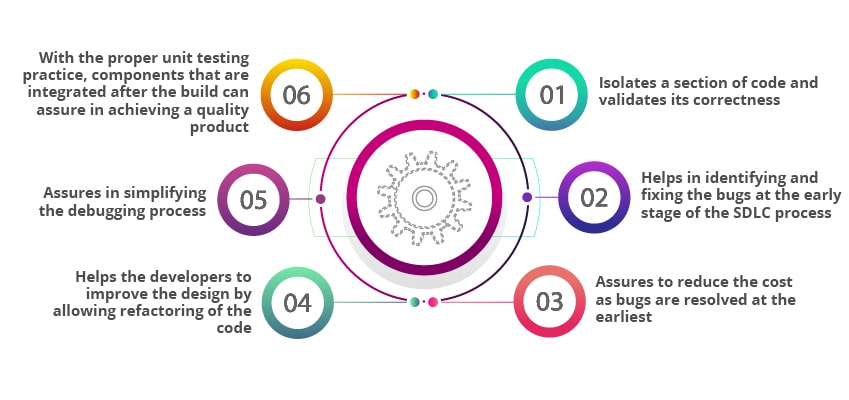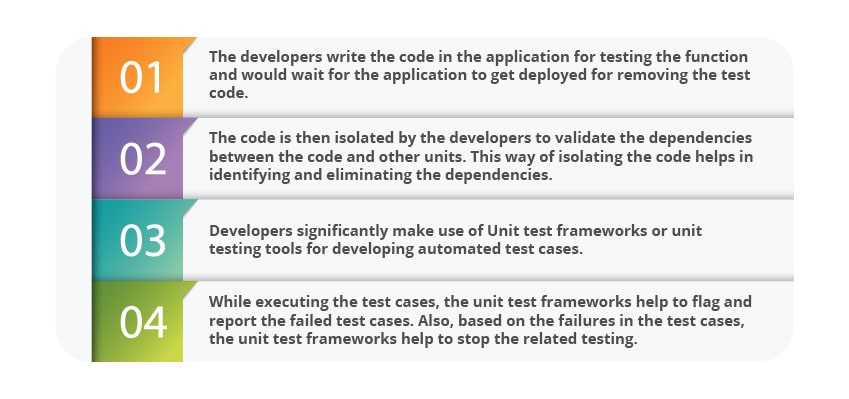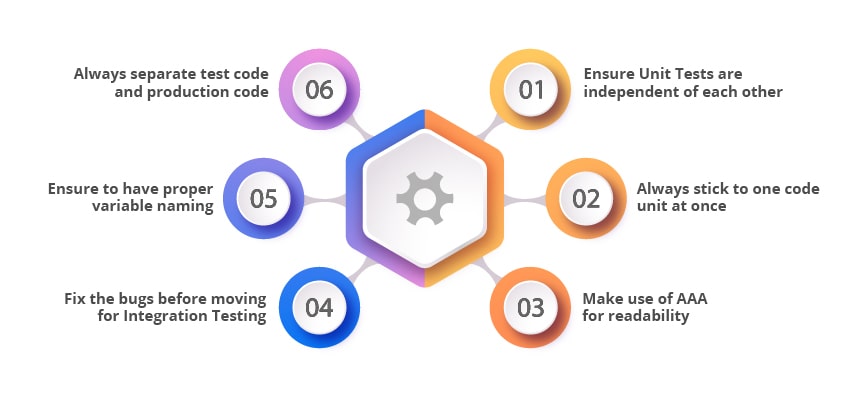Unit testing is one of the software testing types which includes the initial testing phase where the smallest components or the modules of a software are tested individually. With this method of testing, both testers and developers can isolate each module, identify and fix the system defects at a very early stage of the software development lifecycle (SDLC). Primarily, a unit test verifies different behavioral aspects of the system under test and can be broadly classified into state-based and interaction-based unit testing.
A typical unit test consists of three phases which include the first initialization phase where it initializes a small piece of an application it wants to test. The second phase is the addition phase where it adds a stimulus to the system under test and finally, the third phase is the result phase where it observes the resulting application behavior. Evidently, if the observed behavior is consistent with expectations, then the unit test passes else it fails. This indicates there is a problem somewhere in the system under test. These three test phases are named as Arrange, Act and Assert or commonly known as AAA.
Why Unit Testing is important to perform?
Unit Testing is the software testing technique where a group of software program components or modules are tested individually. This technique effectively helps in validating the accuracy of a section of code by considering stubs, mock objects, drivers, and unit testing frameworks. Since it is practiced at the initial testing phase, this testing technique assures to identify and fix the bugs at the early stage of SDLC even before they become expensive for the enterprises to fix when identified at a later stage.
Some developers may attempt to save time by performing minimal unit testing, or when unit testing is skipped, it obviously leads to higher defect fixing costs during system testing, integration testing, and even beta testing when the application is completed.
Moreover, in addition to these, unit testing helps the development teams to understand the code base, validate the correctness of the developed code, reuse the code, and to make the changes faster in the code.
With a proper unit testing practice in place, the developers and testers can help to save time as bugs can be identified early in the process as it is the initial phase of testing. And, skipping or limiting the practice of unit testing can adversely increase the defects and it becomes complex to fix them at a later stage. Hence, it is essential to practice unit testing at the initial stage of the software testing process before planning for the integration testing.
What are the benefits of Unit Testing?

– Isolates a section of code and validates its correctness
– Helps in identifying and fixing the bugs at the early stage of the SDLC process
– Assures to reduce the cost as bugs are resolved at the earliest
– Helps the developers to improve the design by allowing refactoring of the code
– Assures in simplifying the debugging process
– With the proper unit testing practice, components that are integrated after the build can assure in achieving a quality product
What are the types of Unit Testing?

White Box Testing

This testing practice is also known as transparent testing or glass box testing. In this unit testing type, the functional behavior of the software is tested by the developers in order to validate their execution.
Black-box Testing

In this unit testing type, the unit testers are not aware of the internal functionality of the system and are allowed for testing the structure of the function, i.e. the user interface, input, and output.
Gray Box Testing

Gray box testing is popularly known for being the combination of both black-box and white-box testing. In this method, the tester is partially aware of the system functionality and uses this approach for testing various test methods, for executing test suites, and to perform the risk assessment. Also, this unit testing type is known as semi-transparent testing.
Who performs Unit Testing?
Unit testing is the first software testing phase in SDLC and it is usually taken up during the development of the application. These unit test cases are written and executed by software developers. However, in certain exceptional scenarios where developers take a back off to this process, this white-box testing technique is performed by QA engineers.
How to do Unit Testing?
Unit testing can be performed in two methods, i.e. by manual testing and automated testing.
In order to practice unit testing with the manual testing method, it is essential for the unit testers to get a step-by-step instructional document. However, considering the efforts needed for manual testing, automated unit testing is often preferred by most enterprises.
The workflow of unit testing is performed in 4 stages:
1. Creating test cases
2. Reviewing test cases
3. Baselining test cases
4. Executing test cases
Unit Testing process involves:

What are Unit Testing best practices?
